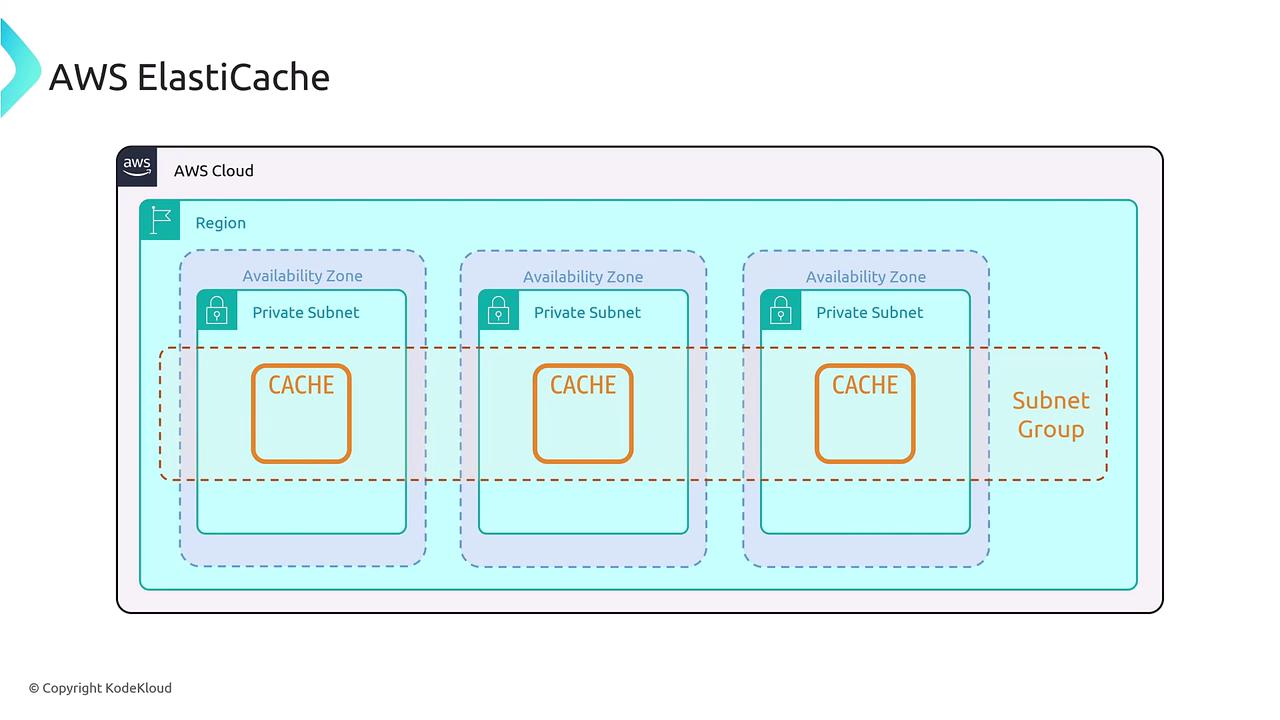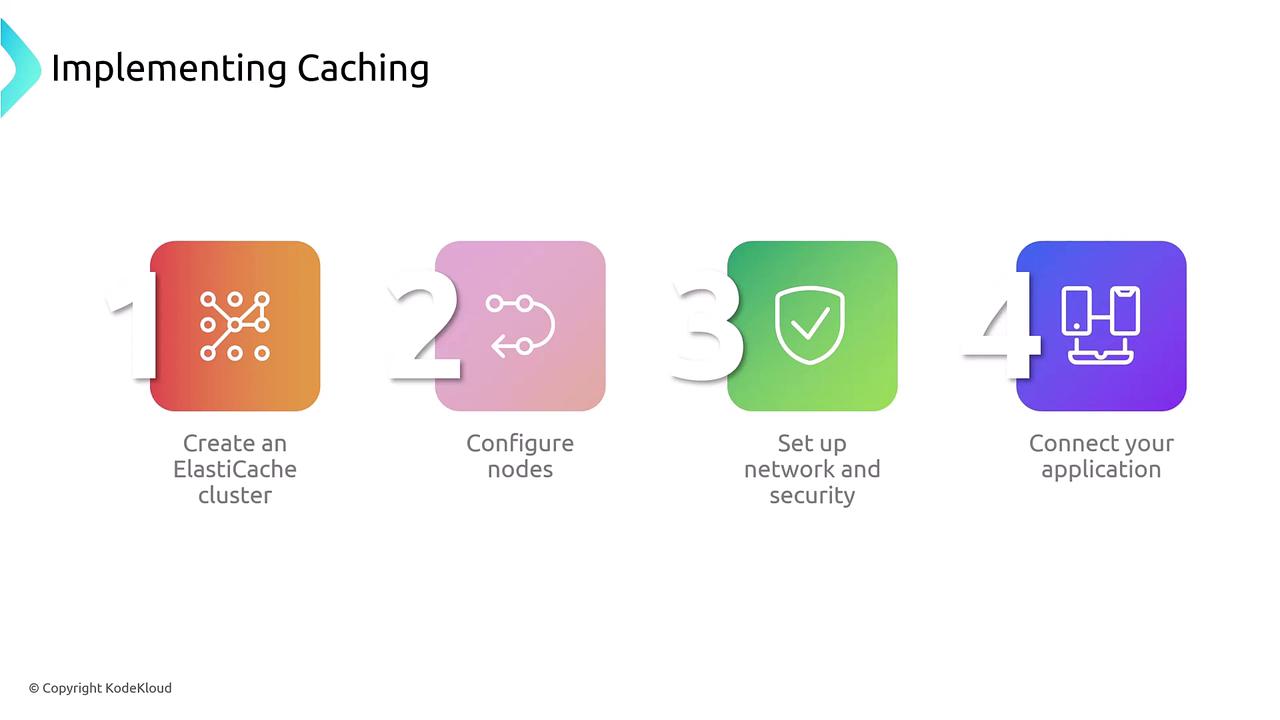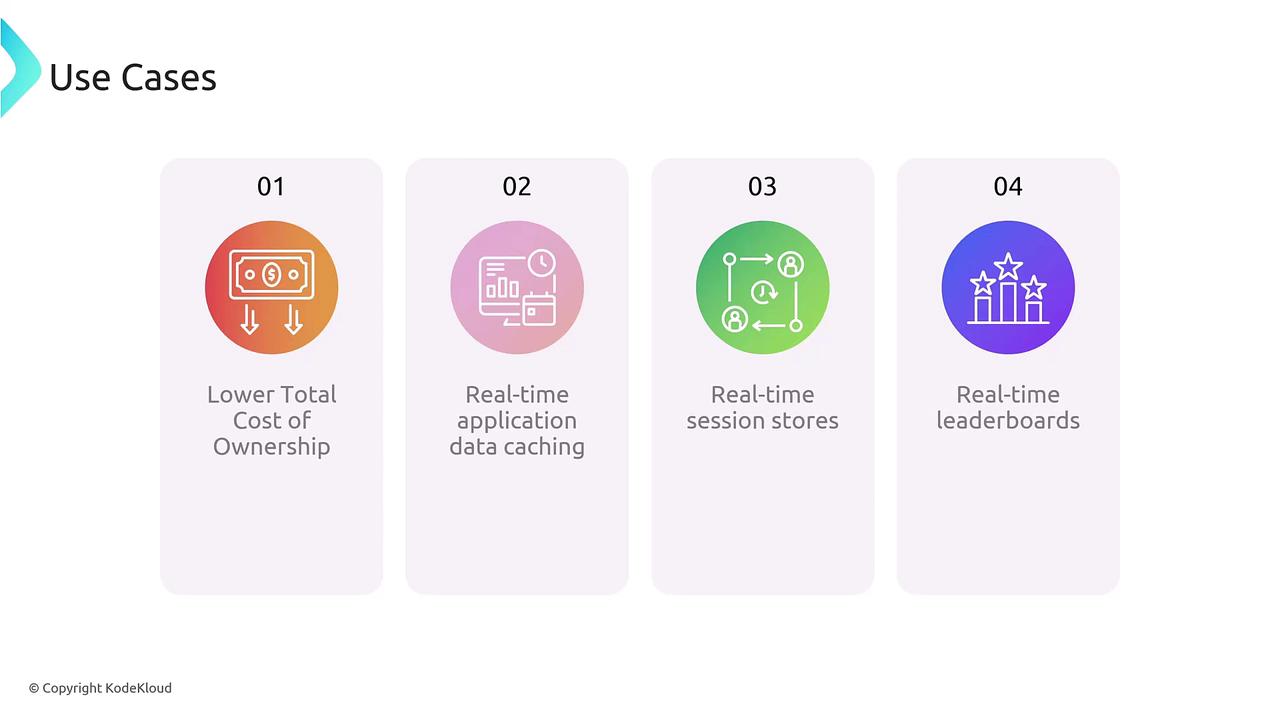AWS Certified SysOps Administrator - Associate
Domain 2 Reliability and BCP
Implementing Caching With Elasticache
Welcome to this comprehensive guide on caching with AWS ElastiCache. In this lesson, we will explore the inner workings of ElastiCache, its primary components, and the key differences between its two main caching engines: Redis and Memcached.
ElastiCache has evolved over the past decade to become a robust, fully managed caching solution. It offers two distinct engines that, while similar in function, cater to different use cases and come with unique features. Understanding these differences is crucial for optimizing system operations and application performance.
Cluster Components and Node Configuration
An ElastiCache cluster is composed of multiple nodes (instances or virtual machines) working together to provide a caching layer. Each node is defined by its type—for example, cache.m7g.large—which specifies the processor, memory, and other special features. In this naming convention, the "m" indicates a general-purpose node, while "7g" signifies that the node is powered by AWS's Graviton (ARM) processor.
In addition to these nodes, every cluster includes the following critical components:
- Cluster Parameter Group: Configures engine settings such as append-only files, backups, and TTL (time-to-live) for cached data.
- Cache Security Group: Acts as a stateful firewall, controlling which entities can communicate with the cache nodes.
Below is a diagram that illustrates the structure of an ElastiCache cluster:

Network Configuration and Availability Zones
ElastiCache operates within AWS regions and is deployed across multiple Availability Zones (AZs) to ensure high availability. When setting up a cache, you must provision it in multiple subnets within an AZ. The replication and high availability features depend on the chosen engine:
Redis:
Offers advanced replication, read replicas, data persistence, encryption at rest, and multi-AZ deployments through replication.Note
Redis is ideal for complex caching scenarios that require robust data management and resilience.
Memcached:
Provides a simpler configuration without built-in replication across AZs. It supports auto-discovery for dynamically scaling nodes and partitions (shards) data across nodes for efficient caching.Note
Memcached is suited for applications needing a high-performance cache without the overhead of advanced data persistence features.
The diagram below presents an architectural view of how ElastiCache integrates within a region across multiple Availability Zones:

Redis vs. Memcached
The two flavors of ElastiCache each target different caching needs:
Redis:
- Supports read replicas, in-memory data persistence, snapshotting, pub/sub messaging, and authorization.
- Ideal for complex caching strategies where advanced features and data durability are required.
Memcached:
- Provides a lightweight, high-performance caching solution without persistent storage or advanced replication features.
- Best suited for simple caching scenarios and applications requiring straightforward horizontal scaling.
This infographic summarizes the primary differences and core features of both Redis and Memcached:

Leveraging ElastiCache for Application Caching
ElastiCache is a fully managed service, meaning that your application must be explicitly designed to communicate with it. It is not an inline caching layer or a database proxy; rather, the application must be made "cache-aware." The typical steps to integrate ElastiCache into your application include:
- Creating an ElastiCache Cluster:
Provision your cache cluster using the AWS Management Console, CLI, or CloudFormation templates. - Configuring Nodes and Network Settings:
Set up the appropriate node types, security groups, and subnet configurations. - Setting Parameter Groups:
Adjust engine parameters (e.g., backup settings, TTL values) as needed. - Modifying Your Application:
Update your application logic to utilize the cache, whether by preloading frequently accessed data or implementing lazy loading strategies.
The following diagram outlines these implementation steps:

Use Cases and Integration with AWS Services
ElastiCache can substantially reduce your total cost of ownership by offloading caching responsibilities from your primary database. Common applications include:
- Real-time application data caching
- Session storage (comparable to DynamoDB)
- Real-time leaderboards
- Dynamic content presentation
The diagram below highlights several typical use cases for real-time data caching with ElastiCache:

ElastiCache integrates seamlessly with other AWS services, such as:
- CloudTrail for logging API calls
- SNS for Pub/Sub notifications
- Kinesis Data Firehose for data streaming
This strong integration, along with microsecond response times and high availability, makes ElastiCache an essential component for building efficient, scalable applications.
Conclusion
AWS ElastiCache provides powerful caching solutions tailored to different application needs. With ElastiCache for Redis delivering advanced caching capabilities and Memcached offering a streamlined, high-performance option, you can choose the best engine based on your requirements. By setting up clusters, configuring nodes and security measures, and integrating the cache into your application workflow, you can enhance performance, reduce latency, and lower operational costs.
We hope you find this guide on implementing caching with ElastiCache both informative and helpful for optimizing your applications.
Watch Video
Watch video content